Market
Artificial Intelligence May Have Cracked the Code to Creating Low-Priced Works on Canvas
Artifly was inspired by Christie's sale of AI-generated art by Obvious.
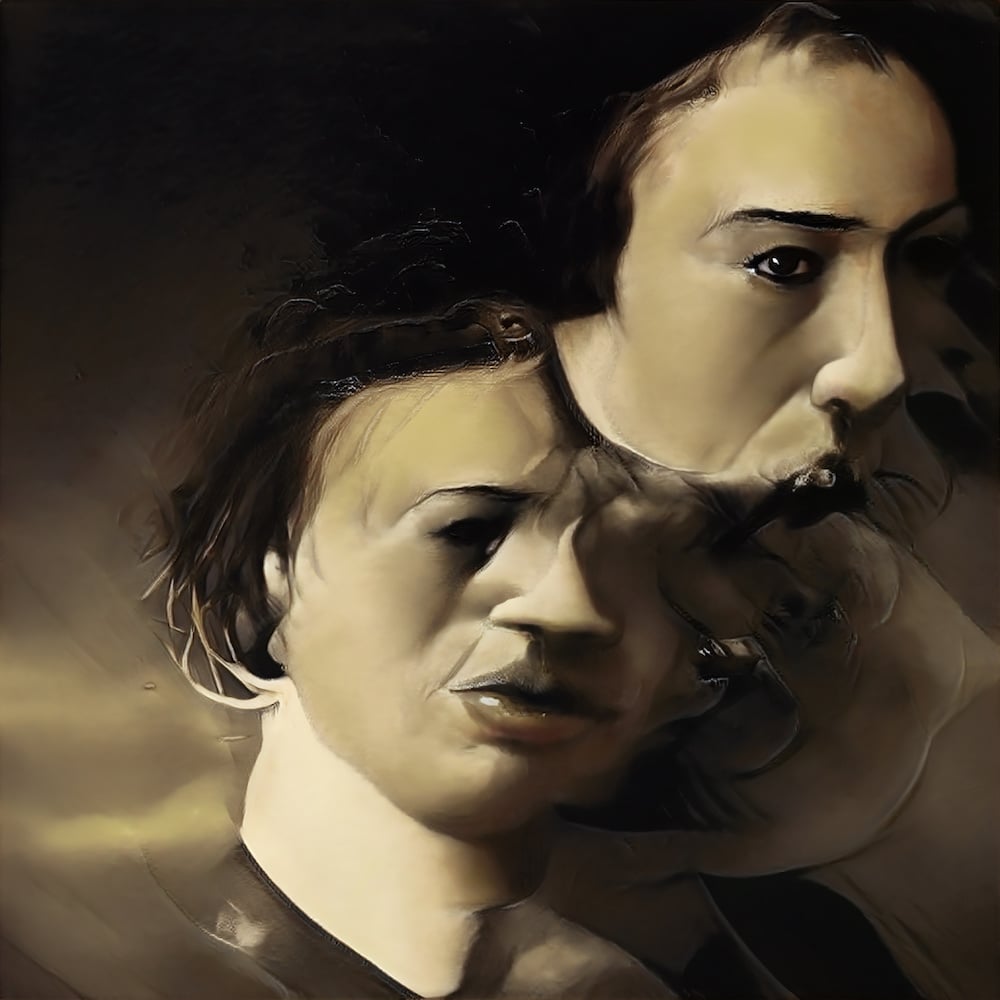
Artifly was inspired by Christie's sale of AI-generated art by Obvious.

Eileen Kinsella

What better time for a “next-generation” version of art to come crashing into the art world than 2021? After all, this is the unprecedented year that saw an explosion of demand and sales of NFTs or non-fungible tokens, which are inextricably tied to crypto-currency and blockchain technology. Specifically, we’re now talking about art created by “artficial intelligence”… yes, the machines are taking over art too.
In 2018, Christie’s sold Portrait of Edmond de Belamy (2018), the first-ever original work of art created using artificial intelligence to come to auction (it sold for $432,500 against a high estimate of $10,000), Inspired by reports of the sale, Ben Kovalis and two like-minded childhood friends from Israel, Eyal Fisher and Guy Haimovitz, launched the Art AI Gallery one year later, in late 2019. It involves collections of curated work made using an algorithm that was created over the course of six months and then refined over the next year and a half.
The Christie’s auction “was amazing to us because we are enthusiastic about art but also tech savvy,” Kovalis told Artnet News in a phone interview from London. He and his friends were stunned first by the fact that AI could create art and then by the fact that it could garner the type of price it did, he said.
“We were enthusiastic. We were already speaking about opening a startup company together—which is the dream of every Israeli guy between the ages of 20 and 30,” he said with a laugh.
Last month, the group introduced Artifly, which takes its algorithm development work a step further. Customers scroll through a selection of artwork and click the designs they like, in order to “show Artifly your style.” Then, the user clicks a button reading “Make My Art,” Artifly (the name of which is meant to evoke the phrase “Art on the Fly”) becomes familiar with your selections—and then near instantly, in about a minute, it creates a brand-new personalized artwork. The user then has the option, though not the obligation, to buy a bespoke piece of AI art.
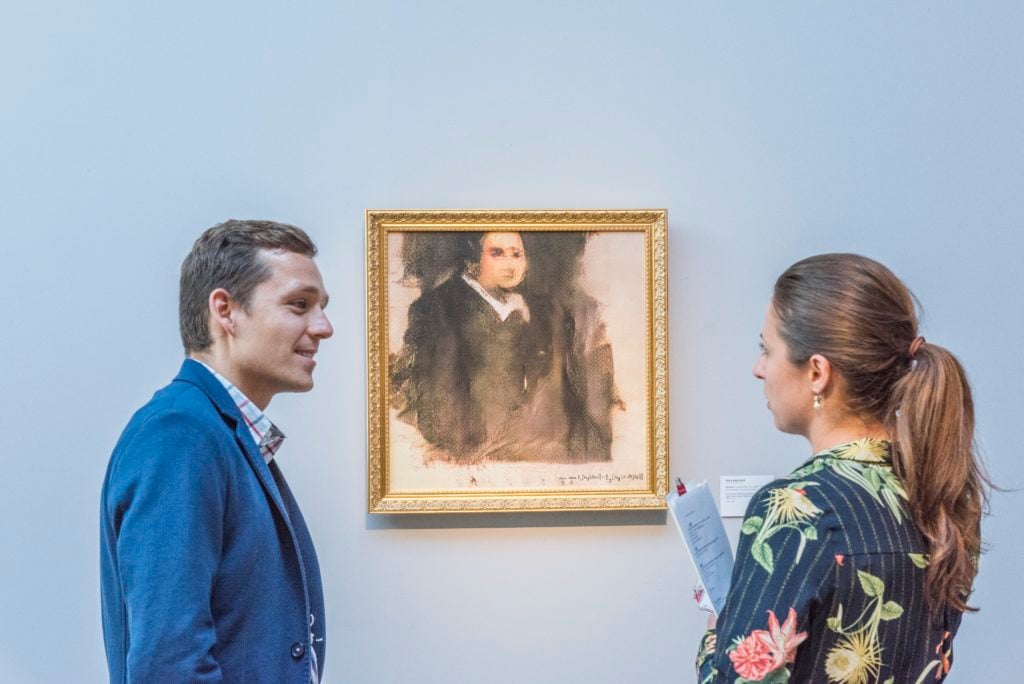
Obvious Art’s ??? ? ??? ? ?? [??? ? (?))] + ?? [???(? − ?(?(?)))], Portrait of Edmond de Belamy, Generative Adversarial Network print on canvas (2018).
At the time of the 2018 auction of Obvious, Fisher was working on image processing and analysis for his PhD in mathematical genomics at Cambridge University. He was inspired by the headlines about the Christie’s sale to start working on algorithms.
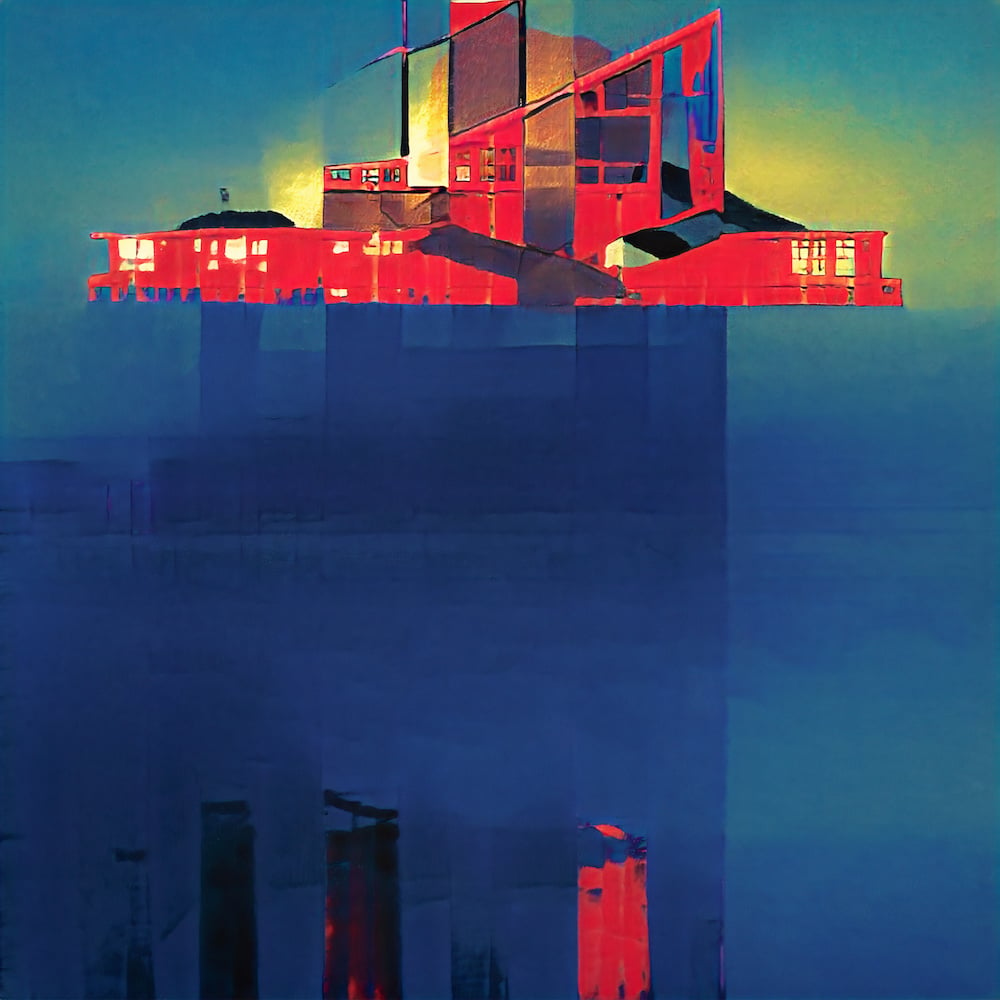
Bold (2021). Image courtesy of Art AI Gallery and Artifly.
“He thought that he could create an algorithm that would make way more beautiful and very engaging art,” says Kovalis. “The idea is not to create a single one and sell it for $100,000 but to create thousands and tens of thousands of them and still keep them one of a kind, so anyone can enjoy them.”
Kovalis has extensive background in e-commerce, having formerly been a VP in the high-tech sector, managing large international operations.
The company founders say that the most common question they face is, “so you want to replace human artists with robots?” Kovalis has a readymade response: “Definitely not—first of all because we don’t think that it is possible to replace artists. This is simply something that enhances art.” He also emphasizes just how much human effort is still required for the process. “You need a lot of sweat, and tears and human involvement to make an AI algorithm that creates something beautiful.”
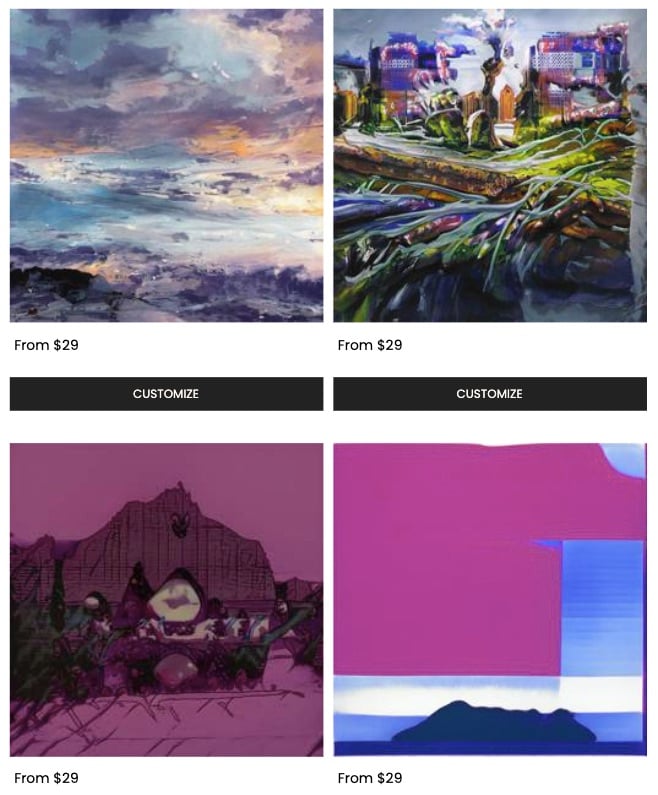
Selection of four potential artworks generated by Artifly.
He compares the use of AI to musicians starting to use synthesizers in the 1980s to create a new type of music. “Not everyone liked the synthesizer. Many did, many didn’t, but it developed into something that helped create pop music. Today, music is the same music that we know and love, it just has some technology in it. This is the same thing that we’re doing with art.”
As for cost, the prices of the works hover around a few hundred dollars at most. It remains to be seen whether a secondary or resale market develops based on the individual certificates of authenticity that can accompany such transactions. And it also remains to be seen whether or not values begin to creep up as they do over time for works sold by galleries and auction houses.
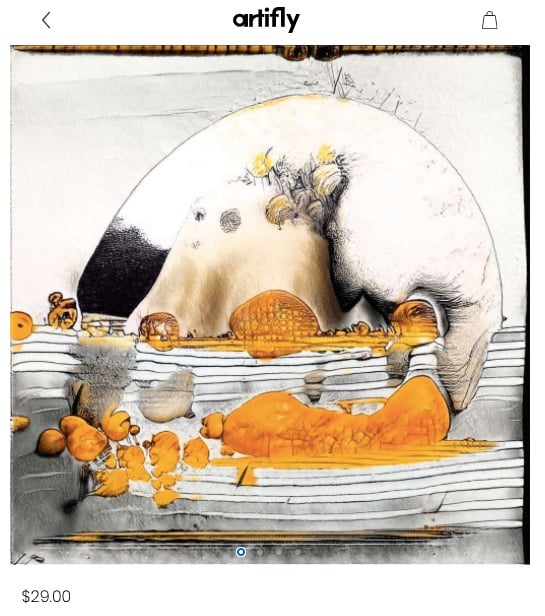
Screenshot of a custom artwork created by Artifly.
For many people, Kovalis says, there is a learning curve when it comes to becoming comfortable with AI-created art. “People can be a bit scared at first. They know about self-driving cars, but seeing an AI that creates art is the wild frontier.”